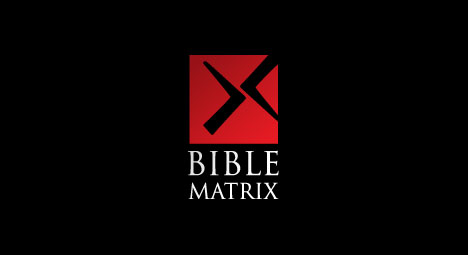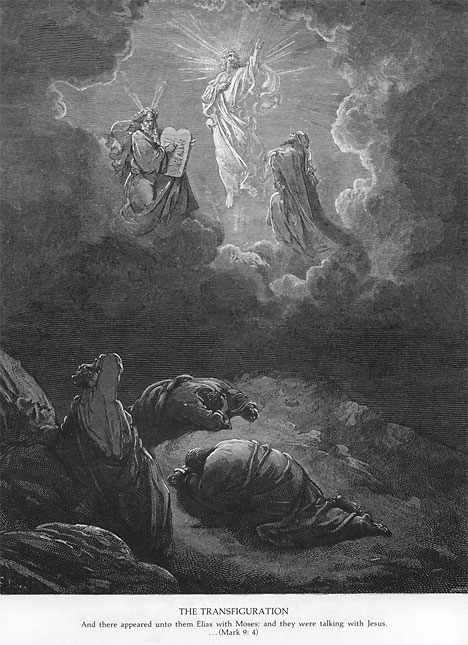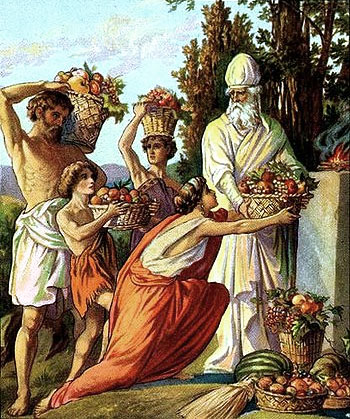Oct
6
2012

The Bible doesn’t set systematic theology and biblical theology in opposition, but rather employs a combination of both: systematic typology. It consistently gives us architectural spaces and fills them with things. Systematic theology provides a helpful list of similar things, and biblical theology can trace the maturation of particular ideas, but what if the text itself gave us a way of combining the two, using them as “spatial coordinates”?
Continue reading
Comments Off | tags: Bible Matrix III | posted in Bible Matrix
Sep
29
2012
2 comments | posted in Bible Matrix
Sep
29
2012
Here’s some wisdom for witnessing from Chris Wooldridge (reposted with permission):
I have recently been reading Cornelius Van Til’s “Christian Apologetics” and it has really got me thinking about how the Church ought to be interacting with the world on some of today’s hot topics. I think all too often we are prone to affirming certain parts of the secular worldview without properly considering the consequences. So here are five things which the good Christian apologist should never agree with the secularist about. There are probably many others, but here are just a few. Continue reading
2 comments | tags: Evangelism | posted in Apologetics, Christian Life, Quotes
Sep
29
2012
 Another review of Bible Matrix on goodreads.com
Another review of Bible Matrix on goodreads.com
Continue reading
Comments Off | posted in Bible Matrix, Biblical Theology
Sep
19
2012

“To have a God-given internal moral compass is to have God Himself.”
Maturation is the process of making God’s “external law” into our internal law, our operating, animating principle. This has huge implications for sanctification, but it also explains a lot of what is going on in the Bible’s symbolism and architecture.
[This post has been refined and included in Sweet Counsel: Essays to Brighten the Eyes.]
Continue reading
13 comments | tags: Covenant Theology, Elijah, Joseph, Moses, Robert Ervin Hough | posted in Bible Matrix, Biblical Theology, Christian Life, Quotes
Sep
17
2012

“What we have received from Jesus is not a collection of ‘merits,’ but rather His maturity.”
James B. Jordan writes:
The problem with the “covenant of works” notion lies in the fact that it is linked up with merit theology. There is no merit theology in the Bible. Merit theology is a hangover of medieval Roman Catholicism.
Continue reading
7 comments | tags: Covenant Theology, Federal Vision, Genesis, James B. Jordan, Melchizedek, Roman, Roman Catholicism | posted in Biblical Theology, Christian Life, Quotes
Sep
15
2012

Part 1 | Part 2
Lifting up the Best
Numbers didn’t seem to be long enough for there to be seven “matrix” cycles, but it seems now that this may be a possibility. For the Covenant “five” to “bloom” into a seven, the “Ethics” of the Covenant structure is split into three: Firstfruits, Pentecost and Trumpets, or “Head,” “Fire’” and “Body.” Since Cycle 3 is “Firstfruits,” we should expect the story to include motifs such as Ascension, the Altar-Land, Levitical ministry, the firstborn, tithing and “devotion.” Hey, guess what comes next in Numbers?
Continue reading
1 comment | tags: Aaron, Firstfruits, Moses, Numbers | posted in Bible Matrix, Biblical Theology, The Last Days
Sep
13
2012

Alastair Roberts has some wise things to say about rational public debate on important issues being hampered by the new culture of “tolerance.” Of special interest to me are his observations concerning the nature of the recent spat involving Doug Wilson, Jared Wilson and Rachel Held Evans. I have had similar experiences in online discussions. I’m relying on and presenting facts and somehow the other side is irate that facts are being presented. And the fact-free, vitriolic, ad hominem comebacks would make my hair curl if I had any.
Continue reading
Comments Off | tags: Alastair Roberts, Culture, Doug Wilson, Education, Masculinity, Politics | posted in Christian Life, Quotes
Sep
12
2012

or Mr White and the Black Hat
“There is a way that seems right to a man,
but its end is the way to death.” (Proverbs 14:12)
King David committed far worse sins than did King Saul. Saul was not an evil man, yet his judgments caused the deaths of many people, including Jonathan, his other sons and even the priests of God. Why did a reign that began so well end in such tragedy?
Continue reading
Comments Off | tags: Acts, AD70, Amalek, David, Edomites, Herod, Pentecost, Proverbs, Samuel, Saul | posted in Biblical Theology, Christian Life, Ethics, The Last Days
Sep
11
2012
The Holy Herringbone
 Part 1 here.
Part 1 here.
We’ve covered the first “Covenant cycle” in Numbers, which in theory should set the pattern (fractally) for the remainder of the book. Here’s my go at the second cycle, which (again, in theory, if my suspicions are correct), should be an “exposition” of the second part of the first cycle, which concerned the “military” arrangement of the tribes around the Tent of Meeting (Delegation). So, even though this cycle works through all seven steps, each step should reflect an “Exodus/Hierarchy” or Delegation theme. Each step thus has two literary “spatial coordinates,” an X and a Y. Each step must thus employ a symbol that pertains to two different Covenant steps, or describes the relationship between them.
Continue reading
1 comment | tags: Aaron, Covenant Theology, Fractals, Literary Structure, Miriam, Moses, Numbers, Systematic typology | posted in Bible Matrix, Biblical Theology, The Last Days


































